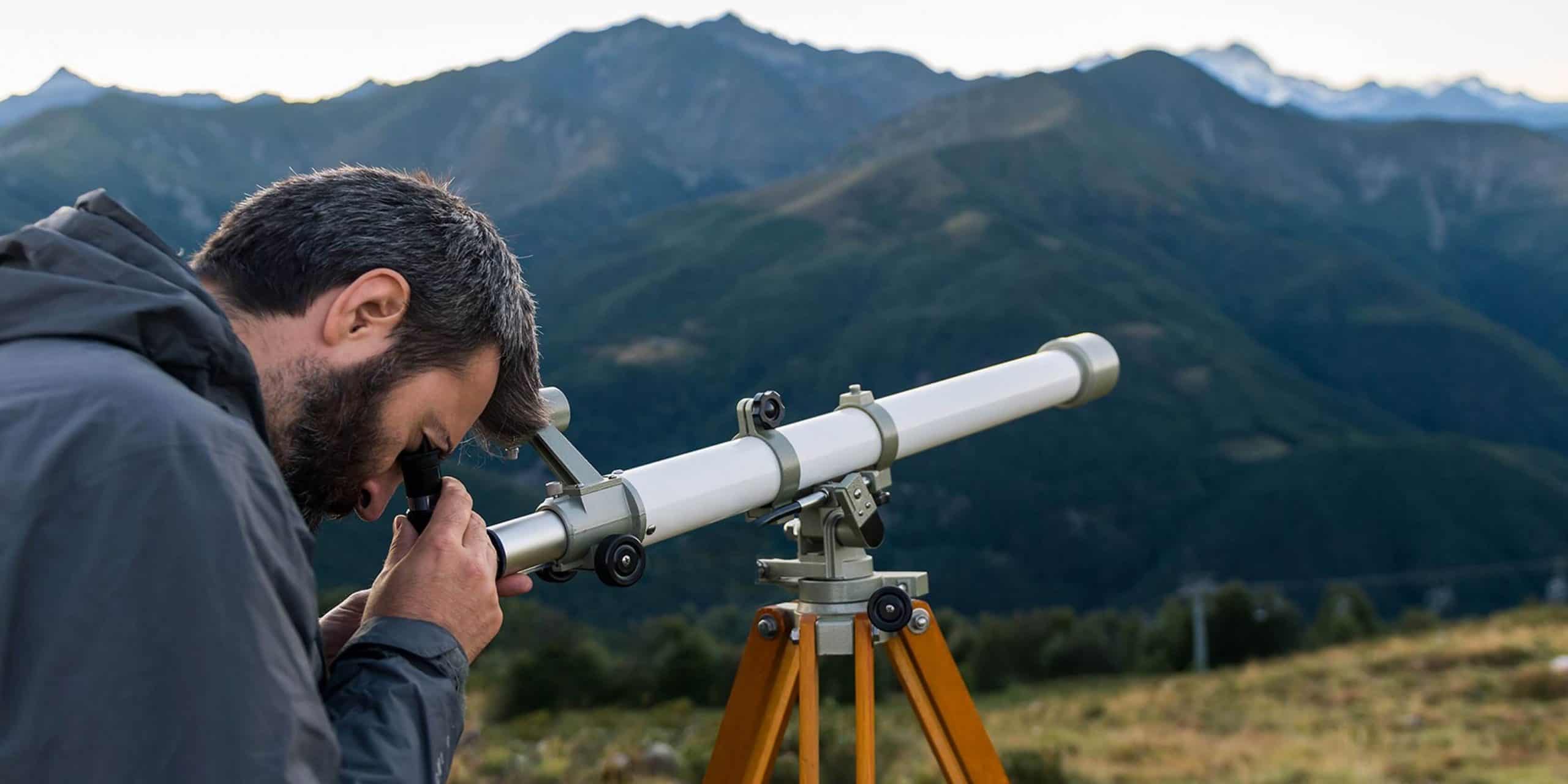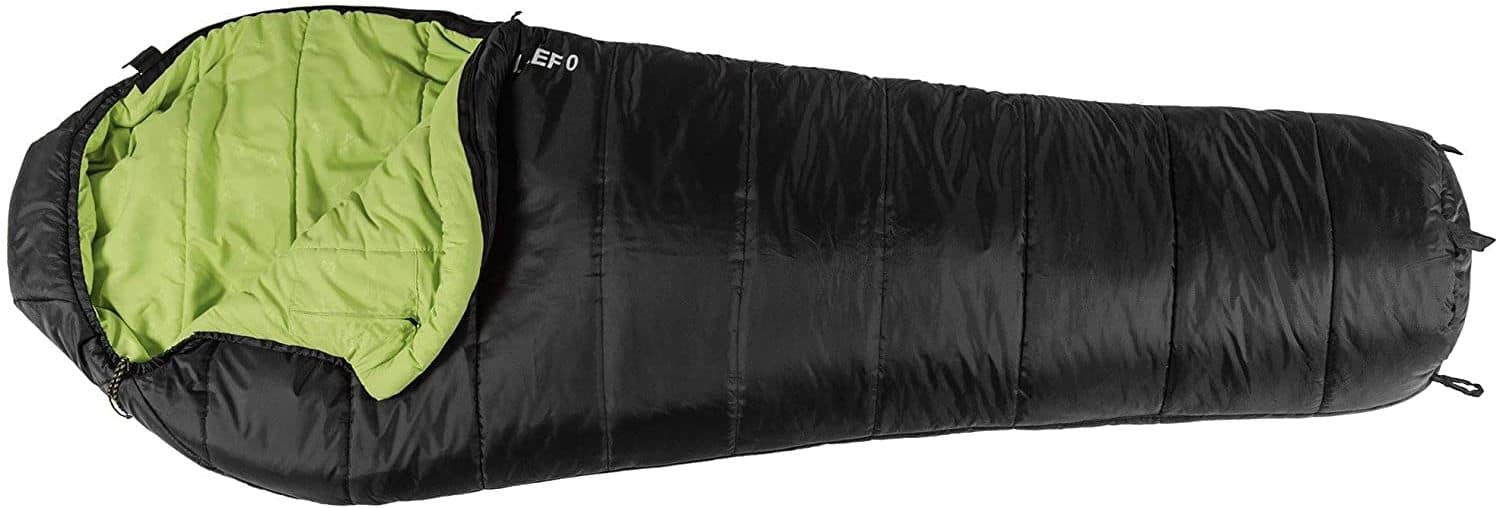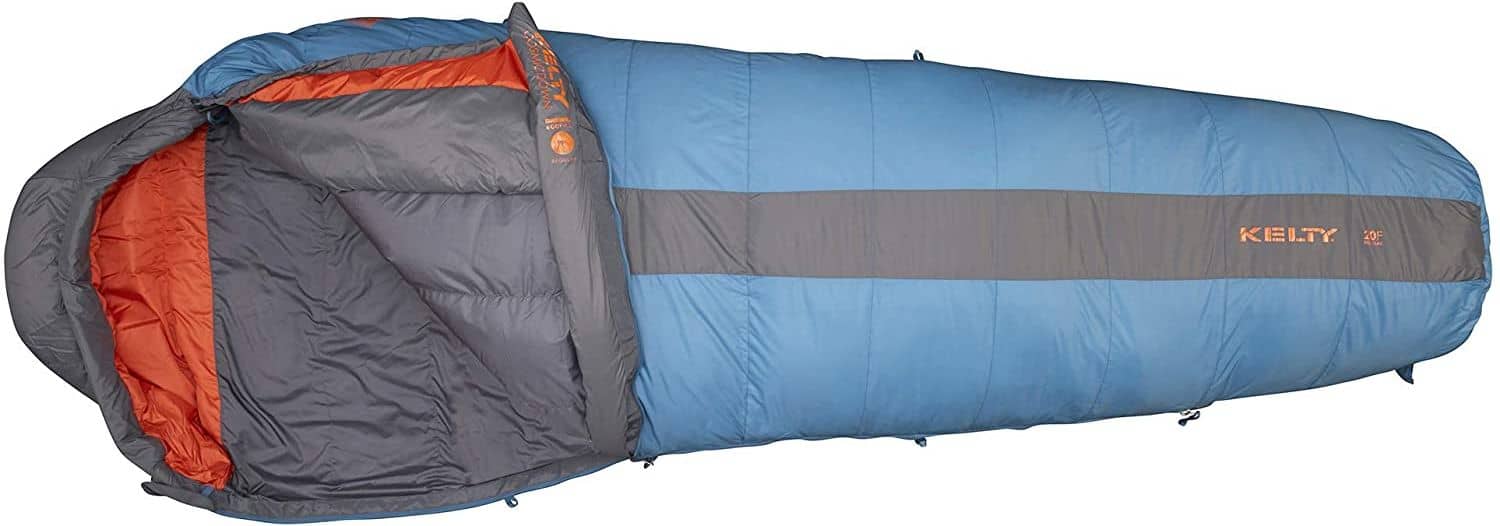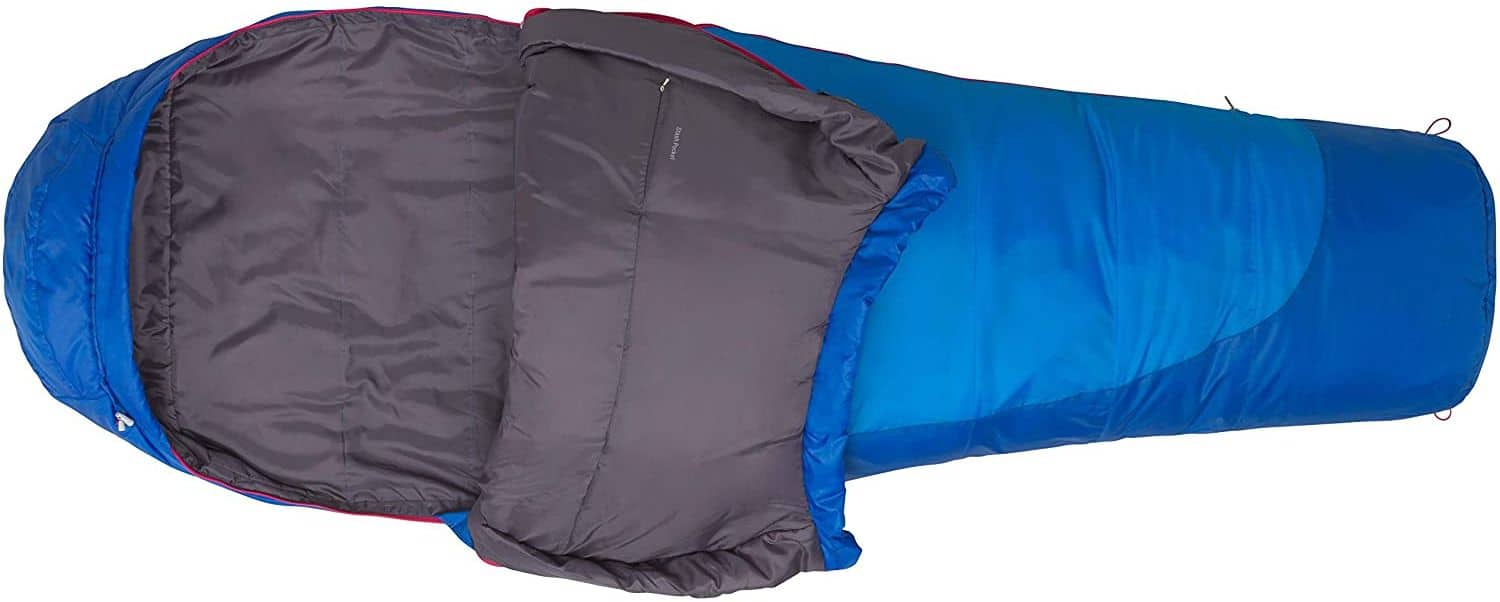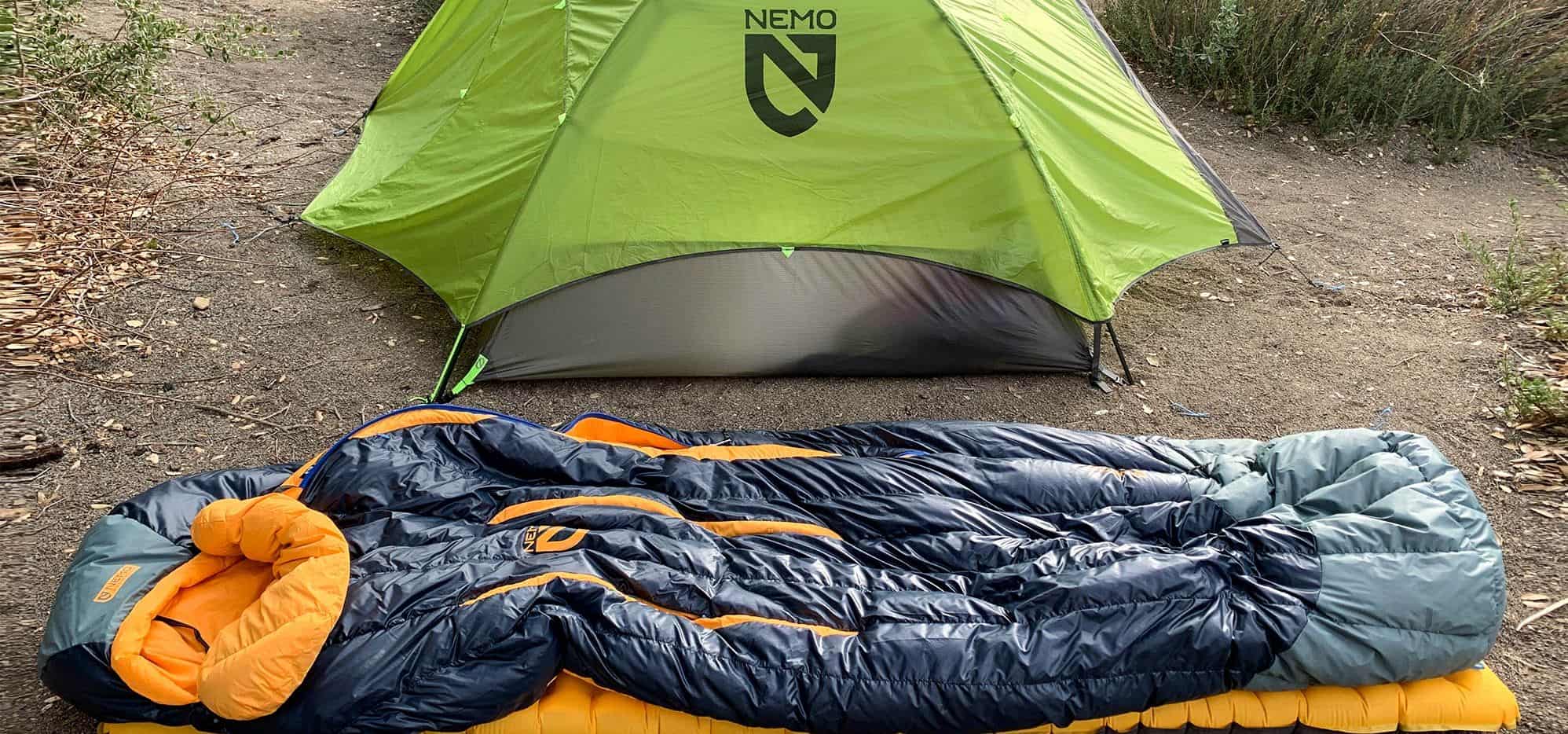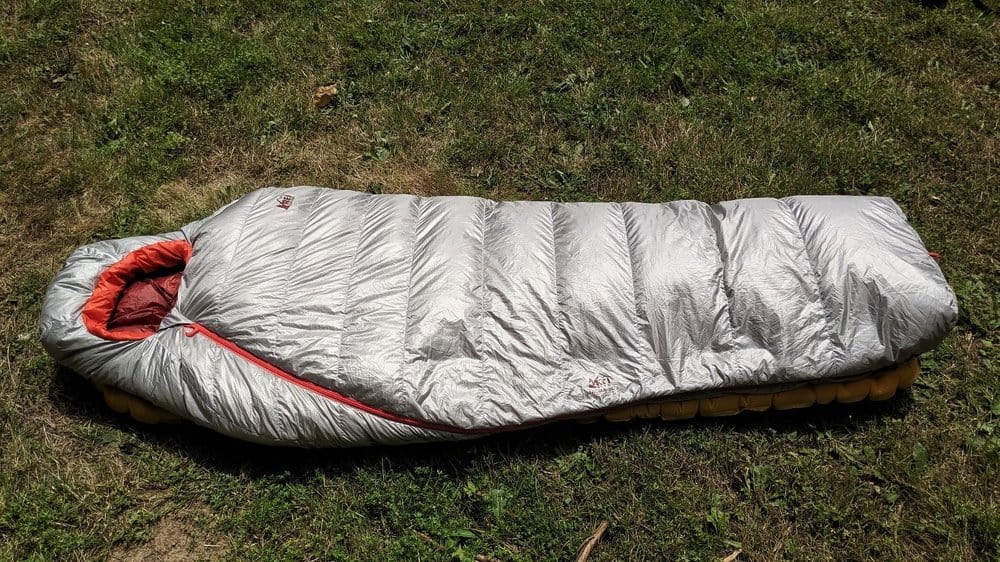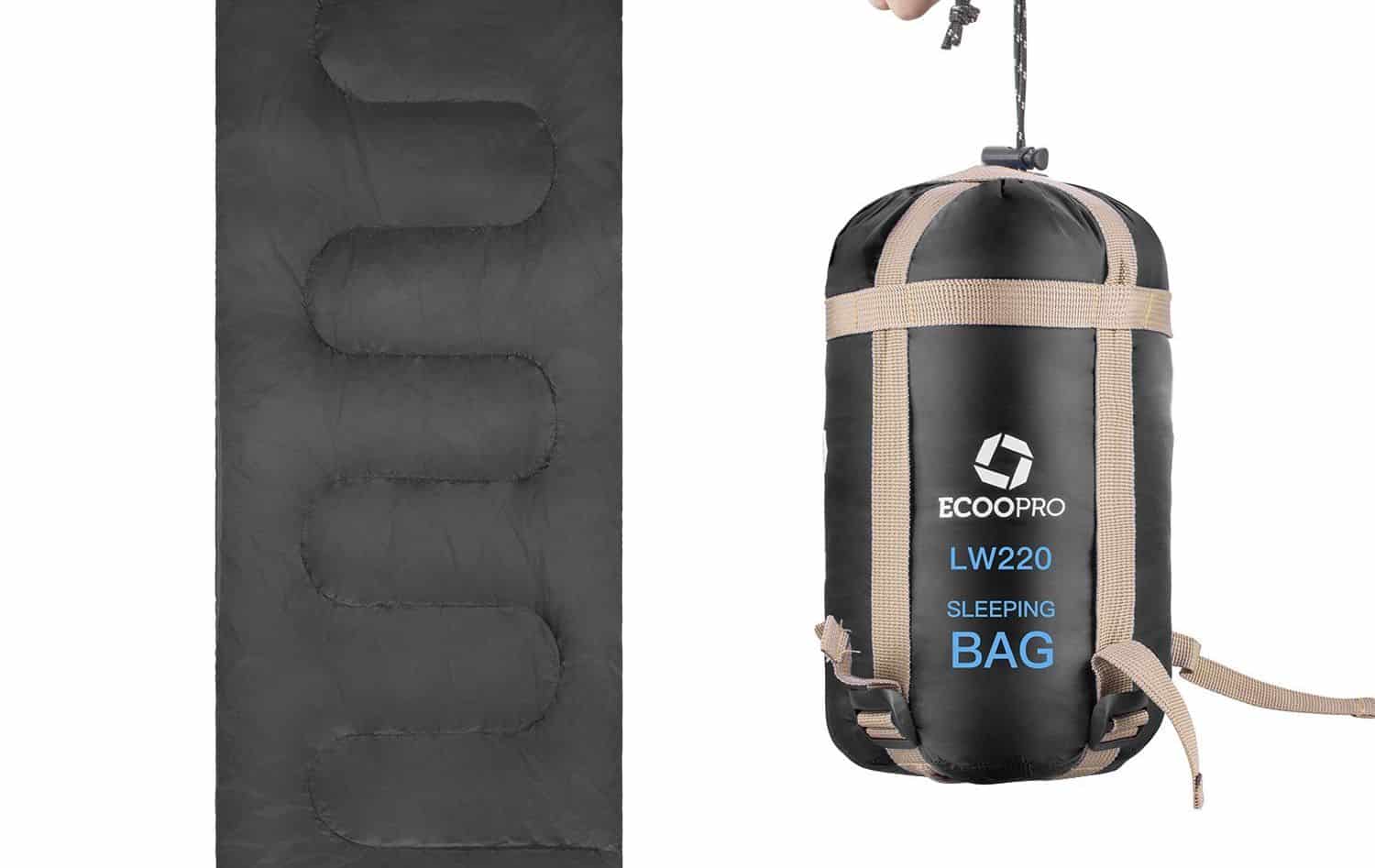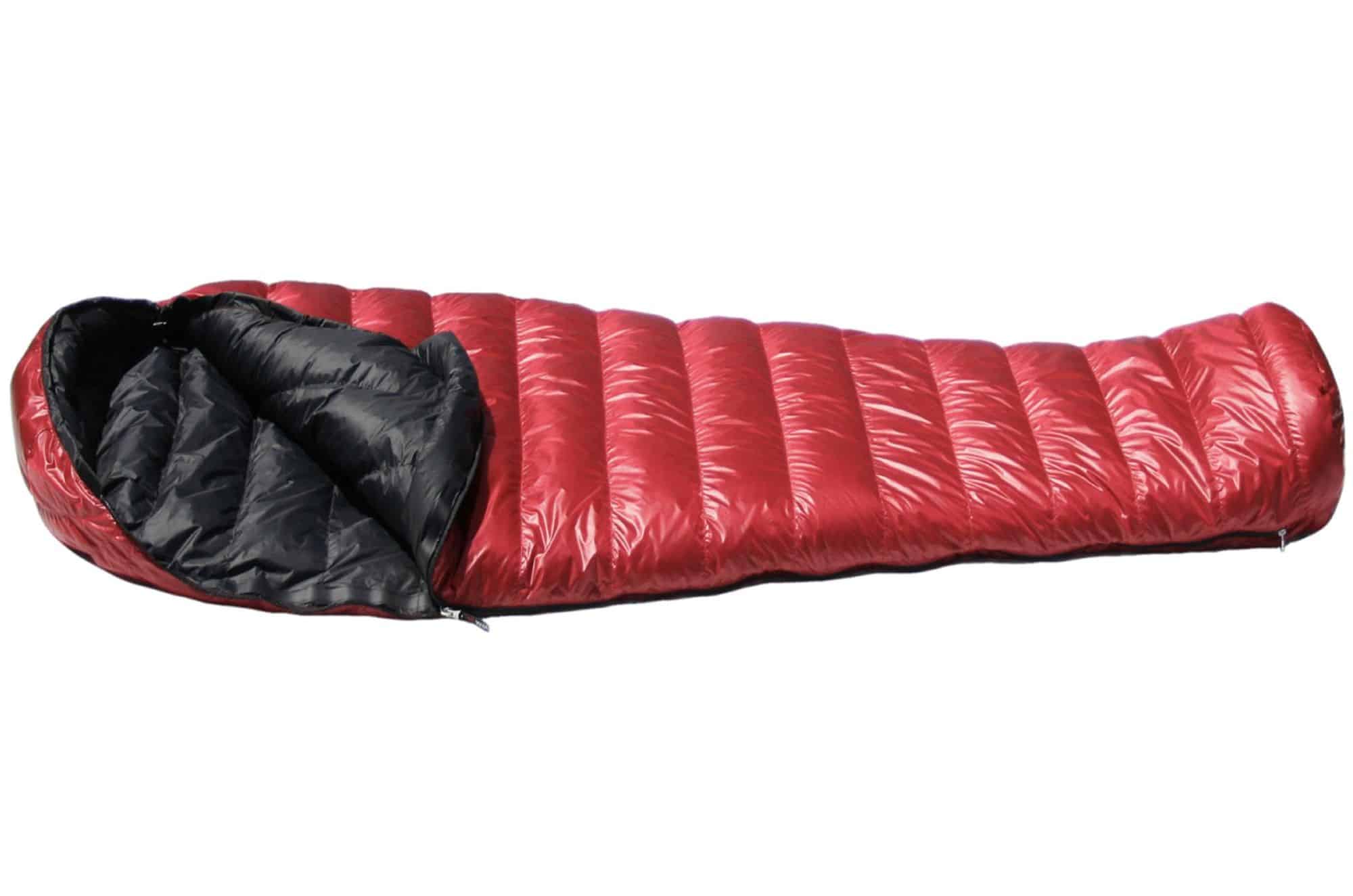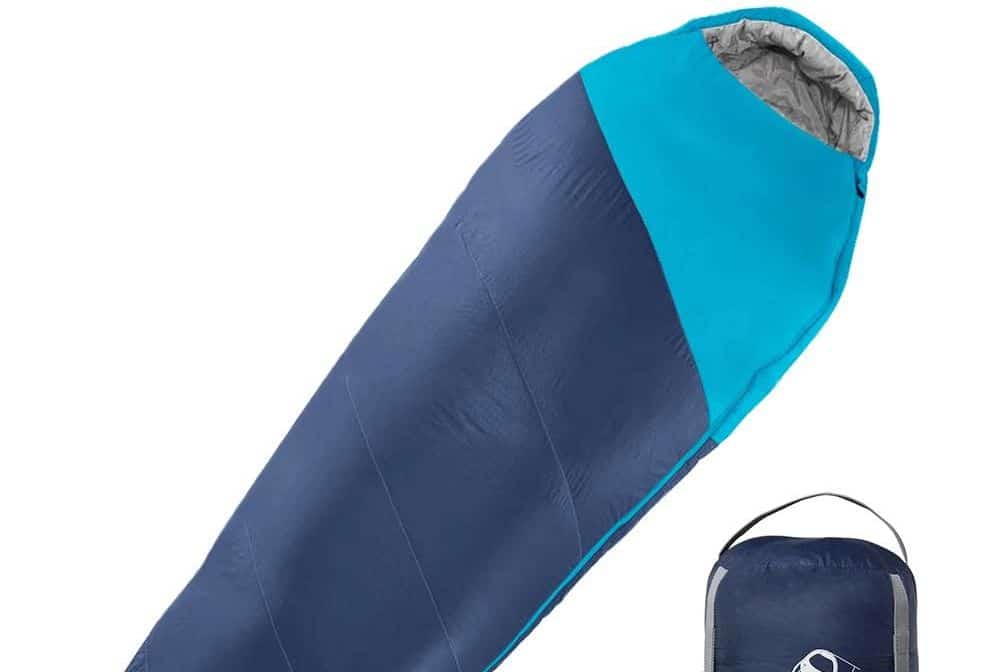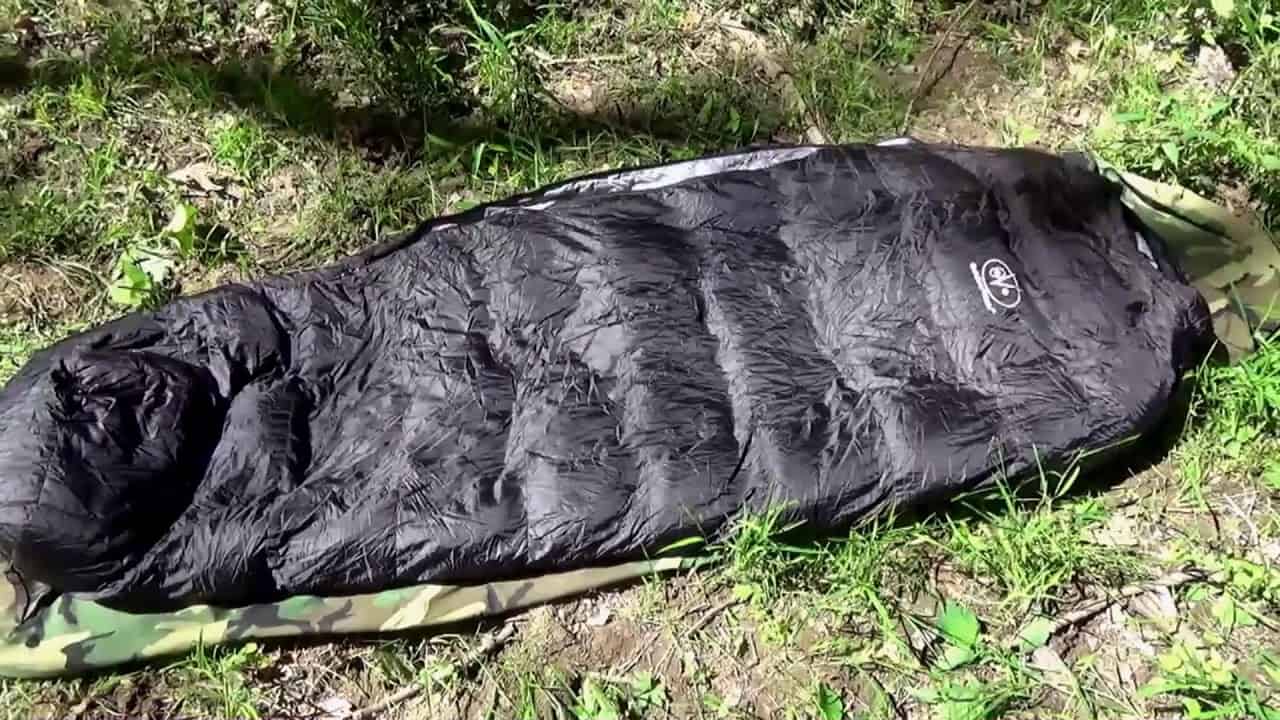Catch some Z’s while camping, hiking, or traversing the Ozarks with the best sleeping bags of 2020. We purchased the top 15 sleeping bags and took them on our camping and backpacking trips to see which one is best for you all of your outdoor camping gear needs. Our top-rated sleeping bags represent some of the very best cold weather, ultralight, budget, and camping sleeping bags on the market. For this round-up we narrowed our initial selections based on specific use and focused on temperature ratings, form factor, insulation type, features, and price to determine the absolute best sleeping bag for consumers in each category.
After we camped our hearts out and told all of our best campfire stories, we all agreed that our #1 top pick and Editor’s Choice for the best sleeping bags for cold weather is the Teton Sports Leef. The bag’s micro-insulation and fill is some of the highest quality available, providing excellent loft that traps heat and delivers nearly incomparable protection from the elements.
Top Sleeping Bags Compared
![Best Sleeping Bags in [year] ([month] Reviews) 4 Best Sleeping Bags in [year] ([month] Reviews)](https://www.gadgetreview.dev/wp-content/uploads/2014/08/TETON-LEEF.jpg) | ![Best Sleeping Bags in [year] ([month] Reviews) 5 Western Mountaineering Summerlite Mummy 32F](https://www.gadgetreview.dev/wp-content/uploads/2017/02/Western-Mountaineering-Summerlite-Mummy-32F.jpg) | ![Best Sleeping Bags in [year] ([month] Reviews) 6 Best Sleeping Bags in [year] ([month] Reviews)](https://www.gadgetreview.dev/wp-content/uploads/2017/02/Winner-Outfitters.jpg) | ![Best Sleeping Bags in [year] ([month] Reviews) 7 Best Sleeping Bags in [year] ([month] Reviews)](https://www.gadgetreview.dev/wp-content/uploads/2017/02/Outdoor-Vitals.jpg) | ![Best Sleeping Bags in [year] ([month] Reviews) 8 Best Sleeping Bags in [year] ([month] Reviews)](https://www.gadgetreview.dev/wp-content/uploads/2017/02/ECOOPRO-Sleeping-BAg.jpg) | |
|---|---|---|---|---|---|
| Teton Sports Leef | Western Mountaineering Summerlite Mummy 32F | Winner Outfitters Mummy | Outdoor Vitals Summit | ECOOPRO Sleeping Bag | |
| Rank | #1 – Editor’s Choice/Best Sleeping Bag for Cold Weather | #2 – Best Ultralight Backpacking Sleeping Bag | #3 – Best Budget Sleeping Bag | #4 – Best Sleeping Bag for Camping | #5 – Best Compact Sleeping Bag |
| Consumer Rating | |||||
| Low Temp Rating | 0° F | 32° F | 35° F | 0° F | 50° F |
| Weight | 4.2 lbs | 1 lb 3 oz | 2.8 lbs | 2 lbs 11 oz | 1.65 lbs |
| Price | $74.99 | $420 | $34.99 | $134.97 | $39.99 |
| Buy Now | Buy Now | Buy Now | Buy Now | Buy Now |
[ft_button url=”https://www.amazon.com/TETON-Sports-Lightweight-Backpacking-Compression/dp/B00Z77AMOA?tag=best-sleeping-bags-20″ rel=”nofollow” target=”_blank” background=”red” type=”square” size=”small”] #1 Pick [/ft_button] Teton Sports Leef 0 Sleeping Bag
![Best Sleeping Bags in [year] ([month] Reviews) 14 Best Sleeping Bags in [year] ([month] Reviews)](https://www.gadgetreview.dev/wp-content/uploads/TETON-LEEF-1.jpg)
Award: Editor’s Choice/Best Sleeping Bag for Cold Weather
Price: $74.99 | Warmth Rating: 0° F | Weight: 4.2 lbs | Material Durability Rating: A | Water Resistance: Yes | Read Full Review: Teton Sports Leef 0 Sleeping Bag Review
WHY IT’S A BEST SLEEPING BAGS TOP PICK: Solidly constructed and built with performance athletes in mind, this sleeping bag will keep you comfortable and protected from the elements again and again.
Teton Sports demonstrates product design and manufacturing excellence in every product facet that they produce. Consumer focus is at the heart of any successful company, and Teton Sports truly delivers with its line of professional-grade products developed in conjunction with athletes that know what true adventurers and adrenaline junkies need.
This is a professional-grade, zero degree sleeping bag intended for winter campers, or for serious backpackers that require nothing short of the best in outdoor technology. The bag is insulated with Teton Sports PolarLire micro-insulation to provide more loft and compression over other sleeping bags. Combine that with the extra fill in the foot box, and you’ll be sure to stay warm even in the coldest of temperatures.
Roomy on the inside thanks to a wider cut than other comparable sleeping bags, the Leef allows sleepers to wear more layers should they require a greater degree of protection from the elements. Heat loss prevention elements such as a full-length draft tube ensure that body heat stays where it should when bundled up in the bag.
External surfaces on the hood, foot box, and back are constructed from a water-resistant 40D ripstop fabric which helps to avoid water absorption in wet conditions.
Noteworthy features of the Leef include taped anti-snag zippers on the top and bottom of the bag for easier ventilation, an internal gear pocket, hood cinch-cord , and a compression sack for stowing both on and off of the trail. Combining the bag’s superior performance and materials makes justifying this bag as one of the best sleeping bags of 2020 easy. This top rated outdoor gear will treat you right on a cold night. When camping, a good sleeping bag is as essential as packing the best water bottle or fire starter.
Other great sleeping bags for cold weather: TETON ALTOS 0°, TETON TRACKER
[ft_button url=”https://www.amazon.com/TETON-Sports-Lightweight-Backpacking-Compression/dp/B00Z77AMOA?tag=best-sleeping-bags-20″ rel=”nofollow” target=”_blank” background=”red” type=”square” size=“large”] View on Amazon [/ft_button]
[ft_button url=”https://www.amazon.com/Western-Mountaineering-Summerlite-Sleeping-Zipper/dp/B00EPJHWUS?tag=best-sleeping-bags-20″ rel=”nofollow” target=”_blank” background=”red” type=”square” size=”small”] #2 Pick [/ft_button] Western Mountaineering Summerlite Mummy 32F Sleeping Bag
![Best Sleeping Bags in [year] ([month] Reviews) 15 Hyke & Byke Sleeping Bag](https://www.gadgetreview.dev/wp-content/uploads/hyke-byke-650-fill-sleeping-bag-1.jpg)
Award: Best Ultralight Backpacking Sleeping Bag
Price: $139.97 | Warmth Rating: 15° F | Weight: 3 lbs | Material Durability Rating: A | Water Resistance: Y
WHY IT’S A BEST SLEEPING BAGS TOP PICK: High quality synthetic like down that is more animal-friendly and doesn’t cost an arm and a leg.
Putting aside a lifetime warranty and 3rd Party Tested and IDFL Certified, this sleeping bag performs when you need it to. Just ask the 50,000 customers they’ve tested it with. It utilizes a synthetic called LofTech, which can perform better than down when it comes to durability during compression and moisture wicking. Which means it will last and dry out better.
On the extreme limit this sleeping bag is good for 15 degrees F with the lower limit being 30 degree F. Other features include ultralight water repellent 400T 20 D ripstop nylon fabric liner with double large YKK zippers and anti-snag slider, wide shoulders and large footbox, snag-free velcro, drawstring, horizontal baffles, and compression stuff sack case for storage included.
To that end it comes in three sizes that vary in weight but are as follows: Short: 2.56 lbs (5′ 6″)., Regular: 2.71 lbs. (6′) & Long: 2.89 lbs. (6′ 6″). And can be compressed into a 10″ long by 7.5″ diameter.
[ft_button url=”https://www.amazon.com/Hyke-Byke-Down-Sleeping-Backpacking/dp/B01EBCY4AY?tag=best-sleeping-bags-20″ rel=”nofollow” target=”_blank” background=”red” type=”square” size=“large”] View on Amazon [/ft_button]
[ft_button url=”https://www.amazon.com/Outfitters-Compression-Lightweight-Traveling-Backpacking/dp/B0743C4HHW?tag=best-sleeping-bags-20″ rel=”nofollow” target=”_blank” background=”red” type=”square” size=”small”] #3 Pick [/ft_button] Winner Outfitters Mummy Sleeping Bag
– ![Best Sleeping Bags in [year] ([month] Reviews) 16 Best Sleeping Bags in [year] ([month] Reviews)](data:image/gif;base64,R0lGODdhAQABAPAAAMPDwwAAACwAAAAAAQABAAACAkQBADs=)
One phenomenal bag that’s well priced for the amount of protection and comfort it offers.
Award: Best Budget Sleeping Bag
Price: $34.99 | Warmth Rating: 35° F | Weight: 2.8 lbs | Material Durability Rating: A | Water Resistance: Yes
WHY IT’S A BEST SLEEPING BAGS TOP PICK: It’s difficult to find a sleeping bag that’s both comfortable and affordable – not to mention reliable – but that’s exactly what Winner Outfitters has brought to consumers with their mummy sleeping bag. An excellent product that won’t break the bank, and is sure to keep you sleeping like a baby on your next adventure.
Winner Outfitters manufactures high-quality, outdoor and backpacking gear at competitive prices, and this mummy sleeping bag is the perfect example of that. One of the best sleeping bags of 2020, it is both comfortable and highly insulating for a reasonable price.
Heat loss is mitigated through the use of an incorporated extra-large draft collar, fat foot box and adjustable hood. In addition to a little extra loft in the foot box, the bag’s shape and design help to keep warmth in the bag and provide you with a little extra foot room for the best night’s sleep you can get.
In field testing, this bag surpassed expectations in comfort, durability, temperature rating, compression, and cost – We tested this bag in the Ozark Mountains on a three-day hike and it made us want to stay even longer. Low temps touched in the high 20s and we still felt nearly as cozy as we would have at home in our beds. The bag compresses down smaller than most others in its segment and we had no problem stuffing it in the lower section (sleeping bag compartment) of our packs.
[ft_button url=”https://www.amazon.com/Outfitters-Compression-Lightweight-Traveling-Backpacking/dp/B0743C4HHW?tag=best-sleeping-bags-20″ rel=”nofollow” target=”_blank” background=”red” type=”square” size=“large”] View on Amazon [/ft_button]
[ft_button url=”https://www.amazon.com/dp/B01LDERIUG?tag=best-sleeping-bags-20″ rel=”nofollow” target=”_blank” background=”red” type=”square” size=”small”] #4 Pick [/ft_button] Outdoor Vitals Summit 0°F Sleeping Bag
![Best Sleeping Bags in [year] ([month] Reviews) 17 Best Sleeping Bags in [year] ([month] Reviews)](https://www.gadgetreview.dev/wp-content/uploads/Outdoor-Vitals-1.jpg)
Award: Best Sleeping Bag for Camping
Price: $134.97 | Warmth Rating: 0° F | Weight: 2 lbs 11 oz | Material Durability Rating: A | Water Resistance: Yes | Read Full Review: Outdoor Vitals Review
WHY IT’S A BEST SLEEPING BAGS TOP PICK: A classic sleeping bag that has protected three-season hikers and campers for generations.
It’s no wonder so many campers, hikers, and outdoor enthusiast go with Outdoor Vitals when it comes to camp gear selection – they make some of the best outdoor gear on the planet, just ask someone that owns the Summit. It’s a sleeping bag that’s been around for a while and comes in highly rated from everyone who uses one. And for good reason! Its superior quality and reliability make a staple among some that frequent the great outdoors.
The bag’s over-sized hood and widely cut chest section make even large-bodied sleepers feel comfortable when all zipped up (and if you’re not Goliath you can easily turn over while in the bag). The foot area is roomy and comfortable too.
Rated to 0° F, we’ve found that with a quality sleeping pad and base layers you can comfortably rely on this rating – potentially even lower, although we haven’t tested this bag in temps under its limit rating. The compressibility of the bag may leave a little to be desired, but when compared to other bags offered gear outfitters like The North Face Cat’s Meow, we’ve found this one to be on the smaller side (no real complaints from our team of testers).
Other Great Sleeping Bags for Camping: Paria Mummy 15F, The North Face Campforter, The North Face Cat’s Meow
[ft_button url=”https://www.amazon.com/dp/B01LDERIUG?tag=best-sleeping-bags-20″ rel=”nofollow” target=”_blank” background=”red” type=”square” size=“large”] View on Amazon [/ft_button]
[ft_button url=”https://www.amazon.com/ECOOPRO-Warm-Weather-Sleeping-Bag/dp/B0756TV6XG?tag=best-sleeping-bags-20″ rel=”nofollow” target=”_blank” background=”red” type=”square” size=”small”] #5 Pick [/ft_button] ECOOPRO Sleeping Bag
![Best Sleeping Bags in [year] ([month] Reviews) 18 Best Sleeping Bags in [year] ([month] Reviews)](https://www.gadgetreview.dev/wp-content/uploads/ECOOPRO-Sleeping-BAg-1.jpg)
Award: Best Compact Sleeping Bag
Price: $39.99 | Warmth Rating: 50° F | Weight: 1.65 lbs | Material Durability Rating: A | Water Resistance: Yes | Read Full Review: ECOOPRO Sleeping Bag
WHY IT’S A BEST SLEEPING BAGS TOP PICK: One of the absolute best sleeping bags for hikers that need fantastic protection in a small package. This synthetic insulated jewel is an excellent choice!
The materials used in this ECOOPRO sleeping bag is ideal for camping and hiking warm and moist environments. Experienced hikers will tell you they know all too well how much it sucks to be stuck with wet down gear. In fact, if it’s really cold outside, having a wet down sleeping bag can be life threatening – leaving hikers with only one option, to keep hiking until their gear dries, or they’re in a warmer climate.
This bag’s water resistant, quick-drying material helps to solve the problem of wet down (wet down offers little to no protection from the elements). A super tough exterior polyester shell and lining deliver exceptional durability without compromising comfort and the bag’s ability to breathe.
The foot box and hood offer plenty of room to move around and stay cozy, and a full-length zipper is constructed with an antisnag binding tape making venting a breeze even in pitch black darkness.
[ft_button url=”https://www.amazon.com/ECOOPRO-Warm-Weather-Sleeping-Bag/dp/B0756TV6XG?tag=best-sleeping-bags-20″ rel=”nofollow” rel=”nofollow” target=”_blank” background=”red” type=”square” size=“large”] View on Amazon [/ft_button]
How We Choose the Best Sleeping Bag
As an avid backpacker, I’ve had my fair share of sleeping bags both during the fall in South Texas and the dead of winter in Northern New Mexico’s Wheeler Peak Wilderness – and I know how much of a bummer it can be to fall victim to a poorly constructed bag while on the trail. Our main goal with this roundup is to help you make a more informed decision, and reduce the probability of you having a bad time stuck shivering in the cold on your next adventure.
Sleeping bags come in a variety of temperature ratings ranging from 32 degrees Fahrenheit, or warmer, all the way down to -30° and below. Since this roundup review is inclusive of bags which cover all climates, we didn’t eliminate sleeping bags based solely on temperature ratings. Having stated that, it’s important to understand exactly what a sleeping bag’s rating means and how it might affect you the next time you’re out in the wild.
Typically, summer bags are rated for 32° and higher, three-seasons have a rating of between 10° and 32°, and winter bags are designed for temps of 10° and below. Ratings listed on sleeping bags describe the lowest air temperature in which a user can sleep comfortably within the bag. These ratings usually assume that the sleeper is wearing long underwear, and using an air, or foam, sleeping pad in conjunction with the bag – some form of insulation between the ground (or passing air if you’re sleeping in a hammock) is required since the fill insulation within a sleeping bag will be depressed when you lay on top of it (effectively nullifying most of the insulating property).
The type of sleeping bag, either mummy, rectangular, semi-rectangular, or double should first be considered when considering a bag that suits your individual needs. Aside from the obvious differences, what are the advantages and/or disadvantages of using one form versus another? Casual campers will probably prefer a rectangular, or semi-rectangular, bag over a mummy style because these offer more internal space to move around, are often less expensive, and don’t hug the body as tightly as a more technically-designed mummy bags – mummy bags are meant for multi-night camps, or environments in which campers may be more exposed to the elements. They’re the ideal choice for cold weather environments because they’re designed to maximize efficient use of a small amount of space. Mummy bags are also typically lighter than rectangular bags, and pack better than bulkier rectangular sleeping bags. Double wide sleeping bags allow for two adults to share one bag which is nice if you’re planning a romantic evening under the stars.
There are three major types of insulation used to fill sleeping bags: synthetic, down, and water-resistant down. Synthetic filled bags are typically more common among lower cost sleeping bags unintended for heavy outback use. The synthetic fill is usually a little heavier than down, and it doesn’t compress as well, but it will still work as an effective insulator when it gets wet. Down filled bags are usually pricier, but they often offer a higher insulating value per pound and can be compressed more tightly making them a preferred choice among backpackers. A down side to down fill though is that if the down becomes wet it loses a lot of its insulating value. Water-resistant down is down that’s been treated to repel water and is another, more expensive option for consumers.
What about fill? How do you compare the quality and amount of fill between sleeping bags? The loft, or “fluffiness,” of a down product is referred to as the fill power and is related to the insulating value and relative comfort of a sleeping bag. The larger the fill power, the more air per ounce of down can be trapped which means a greater ability to insulate. While the fill power can be used to roughly gauge the total insulating value of a product, it is important to keep in mind that the quality of the fill makes a significant difference in the performance too. Fill weights greater than 750 is very different from 400 fills. Nearly all fill used in the production of the majority of sleeping bags is sourced as a byproduct from geese raised for food. This is where the majority of the lower-grade fill comes from. Most birds meant for consumption aren’t mature, and their feathers have not completely developed the way an adult bird’s feathers would. Higher-grade fills like those rated at 750, or more, are sourced from more mature geese which are kept alive for breeding purposes. Collection of the fill is more tedious as it falls away naturally from the birds, but the down lofts much better since it comes from older birds.
Other critical components of the best sleeping bag construction which we considered during our review were the shell and lining material. A bag’s outer shell is usually made using a ripstop nylon (in some cases polyester) to enhance durability. Some fabric shells are treated with a water repellent finish (referred to as a Durable Water Repellant, or DWR) to make external surfaces hydrophobic (water beads up and falls away instead of being absorbed by the fabric). Since perspiration is a relatively common human function during sleep, internal surfaces are typically developed to disperse moisture and therefore aren’t made to be hydrophobic.
Sleeping bag hoods are especially important if you’re spending your time camping in cooler temperatures. Some hoods are designed with a pillow pocket as an added optional level of comfort for users.
Stash pockets, sleeping pad sleeves, stuff sacks, storage sacks, and each sleeping bag liner was also considered in part to ensure that consumer comfort and storage options were taken in to consideration when manufacturers designed these bags.
In order to compare sleeping bags properly, all of these variables must be accounted for, weighed, and considered based on individual use.
Why You Should Buy the Best Sleeping Bag
No two camping trips are identical. While it’s easy to unzip a bag that’s too hot, if you’re constantly having to adjust a zipper because you’re uncomfortable in a bag you’ve probably brought along the wrong bag for the job. Keep in mind where and when you plan on using your sleeping bag and then narrow down your options based on the coldest possible temperature for the environment you’ll be spending time in.
Backpacking sleeping bags are more compact when compressed than camping sleeping bags, and often weigh less too. If you’re obsessed with cutting down weight, reducing the weight of your sleeping bag is one of the top ways to cut weight fast. Consider an ultralight option that’s suited for the trip.
Taking everything we’ve touched on into consideration, let’s get on with the list of the best rated sleeping bags of 2020.
Key Factors to Consider
Temperature Rating
- Temperature is the most important aspects of any sleeping bag
- Make sure your bag is rated for your specific environment’s lowest possible temperature
- Expect the cost of winter bags to be significantly more than summer, or three-season options
Materials
- Synthetic materials will often cost less than down alternatives, but will typically weigh more and offer less insulation value per pound than down
- If exposed to water, untreated down will not maintain its insulating properties like synthetics
- Water-resistant down is the more expensive, but more reliable when exposed to moisture
- Higher fill ( 750) is usually a better quality down which offers more loft than lower-grade down
Weight
- One of the three heaviest components in a backpacker’s pack (shelter, sleeping bag, sleeping pad), your sleeping bag should be picked carefully to ensure it’s ideal for your specific use. Having something that’s too heavy will quickly become a hassle on the trail
- On the other hand, if you’re a casual camper weight may be the least important thing you consider when buying. Larger rectangular bags will probably be better suited for casual overnight stays
Key Best Sleeping Bags Features
Shell and Lining Material
- Exterior materials should be thicker and more durable since they’ll likely be exposed to rougher surfaces than the inner lining.
- Durable Water Repellent materials (DWR) are ideal for bags with untreated down fill, in which users expect moisture could be problematic.
Hood
- Nearly everyone has heard that 40 to 45 percent of a person’s body heat is lost through the head, but that’s actually completely false. Body heat is lost evenly according to most medical studies on the subject. Regardless, it’s important that you keep all of your appendages warm in colder weather so an attached hood is ideal for those seeking more frigid environments.
Stash Pocket
- We all love pockets. They help us organize our stuff, and we all love our stuff too. Stash pockets come in handy for those important bits of gear that you need to keep close to yourself when you sleep. Maybe it’s a phone, a GPS unit, a headlamp, or maybe it’s a note from your girlfriend in Barcelona
- Keep in mind, an extra pocket (or any pocket) means extra weight. If you’re an ultralight enthusiast, you know you don’t need a pocket.
Sleeping Pad Sleeve
- These work really well for people that tend toss and turn in their sleep. Not much else sucks more than having to get up in the woods at night and readjust your sleeping pad so you’re not lying on the ground
Pillow Pocket
- If you need more than your extra sweater to cushion your head while you camp, a sleeping bag with an included pocket for a camping pillow might be right for you
Stuff Sack
- A necessity for the backpacker, a stuff sack helps compress that bulky sleeping bag down to a smaller size for cramming in your backpack. We prefer stuff sacks that have compression straps.
Mistakes to Avoid
Unfortunately, we all are prone to making not so perfect decisions from time to time, and one of those decisions could be buying a sleeping bag that you really don’t need. Maybe it’s temperature rating isn’t ideal for you, or perhaps after buying you find that a rectangular bag is better suited for your particular sleeping needs. Rest assured, with a little research (and a helping hand from our review team) buying the right sleeping bag for your adventure doesn’t have to be difficult.
Some sleeping bags are offered in both a regular and long length option. If you’re taller than six feet, chances are you’ll need a bag that’s meant for it. Don’t make the mistake of buying a bag that’s too short, that’s a recipe for poor comfort for sure.
Always, always, always pay close attention to the temperature rating on the bag you’re considering. Having one of the best sleeping bags rated for 0° is great, but if you never camp in environments less than 30° you don’t need it. Buy something that’s perfect for the trip and you’ll stay happy on the trail.
What Else You Should Think About
Through bag testing and field research with experienced hikers, both weekend trekkers and thru-hikers, we’ve found that another critical factor to consider is bag volume when compressed. Some sleeping bags don’t compress well, and if you’re toting around a relatively small pack (say 45 liters), packing a large sleeping bag might present a challenge – especially if you can’t strap it outside of your pack. If you’re hiking for an extended period of time, we suggest making sure that your sleeping bag of choice packs well.
Don’t forget that sleeping pad! Our article on the best sleeping pads can help you pick the perfect sleeping bag companion from the litter. Without a pad, you risk reducing your bags insulation value, and potentially damaging your bag on rough ground. If you’re on the hunt for a great tent, check out our article on the best backpacking tents – it should help. This article on the best tents of 2020 is a good resource too.
Looking for something that’s a little less serious and a little more fun? Check out our review of the shark sleeping bag, bear sleeping bag, and the tauntaun sleeping bag. These make epic children’s sleeping bags, conversation pieces, or some of the best sleeping bags for adults on the trail if you have an inner geek that needs a fix – just make sure you pay attention to that warmth rating.
Our #1 top pick and Editor’s Best Choice for the best sleeping bags for cold weather is the Teton Sports Leef. It will keep you warm and dry in some of the most challenging environments, and it’s competitively priced to ensure your hard-earned money is spent wisely.
![Best Sleeping Bags in [year] ([month] Reviews) 1 TETON Sports Leef Mummy Sleeping Bag - Lightweight...](https://m.media-amazon.com/images/I/31dmxJGU2zL._SL160_.jpg)
![Best Sleeping Bags in [year] ([month] Reviews) 2 Western Mountaineering Summerlite LZ Mummy Sleeping Bag...](https://m.media-amazon.com/images/I/31ETA3QYd1S._SL160_.jpg)
![Best Sleeping Bags in [year] ([month] Reviews) 3 Winner Outfitters Mummy Sleeping Bag with Compression...](https://m.media-amazon.com/images/I/414oSdJhhxL._SL160_.jpg)
![Best Sleeping Bags in [year] ([month] Reviews) 16 Best Sleeping Bags in [year] ([month] Reviews)](https://www.gadgetreview.dev/wp-content/uploads/Winner-Outfitters-1.jpg)
![Best Camping Gear [year] ([month] Reviews) 19 Best Camping Gear 2024 (April Reviews)](https://www.gadgetreview.dev/wp-content/uploads/Campingbox_21-1.jpg)
![Best Sleeping Bags in [year] ([month] Reviews) 20 Best Sleeping Bags in 2024 (April Reviews)](https://www.gadgetreview.dev/wp-content/uploads/TETON-LEEF.jpg)
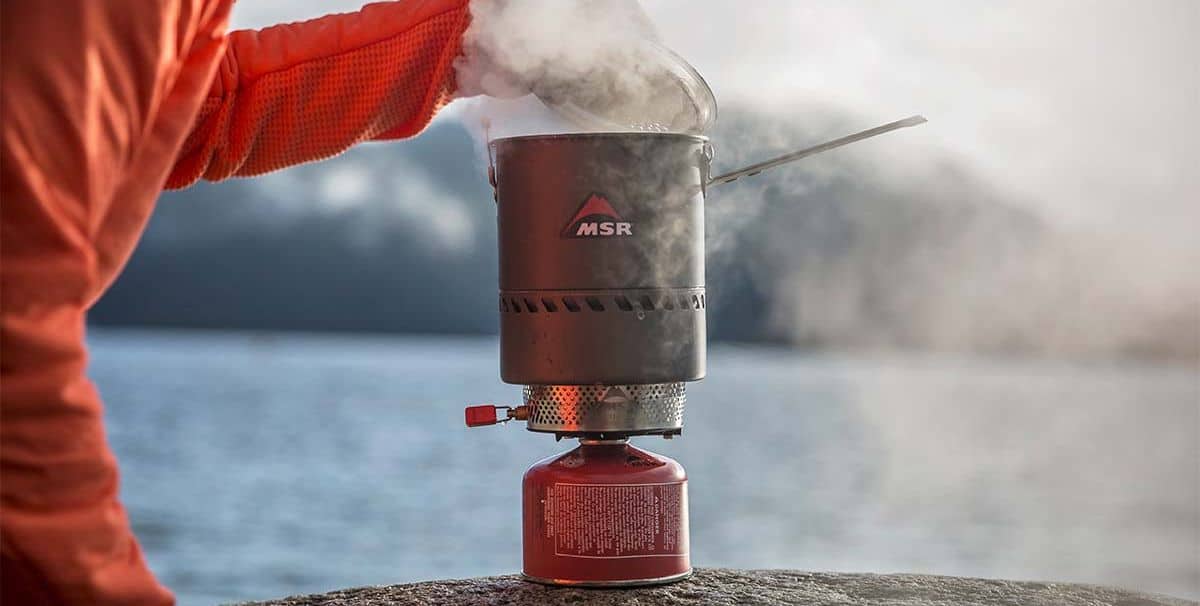
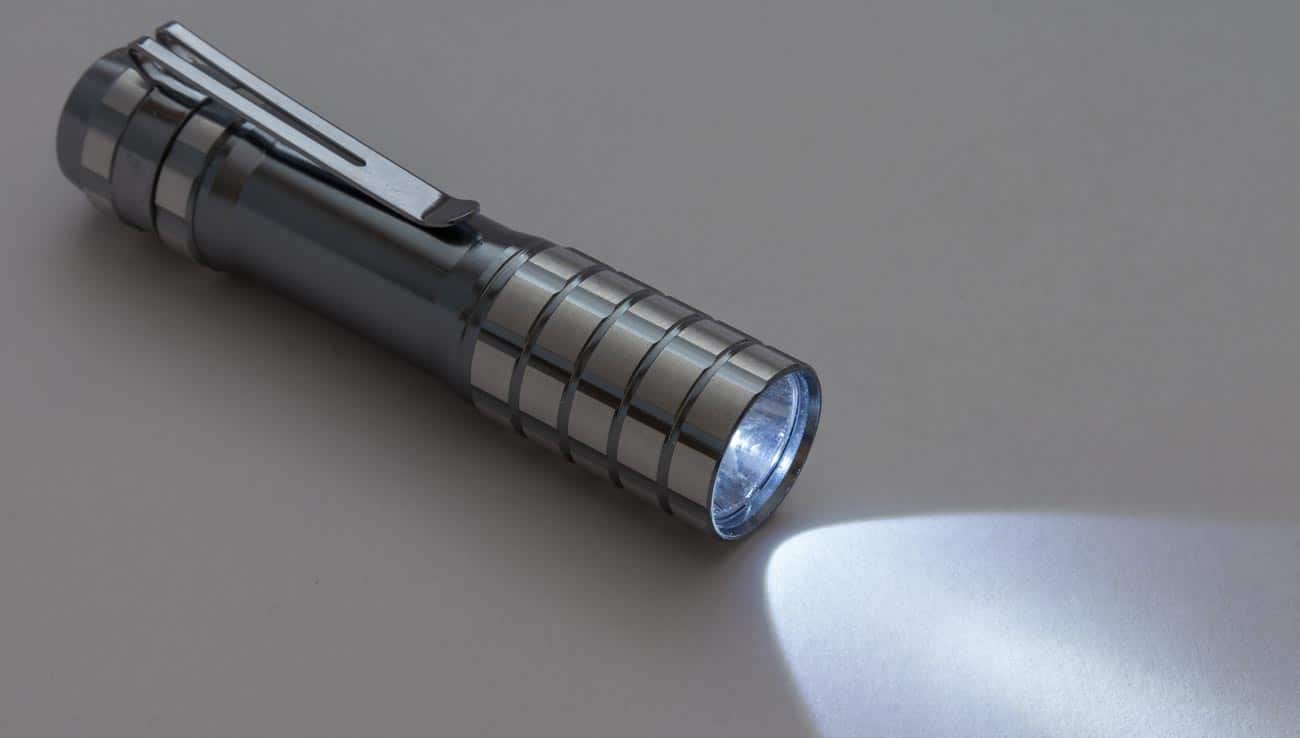
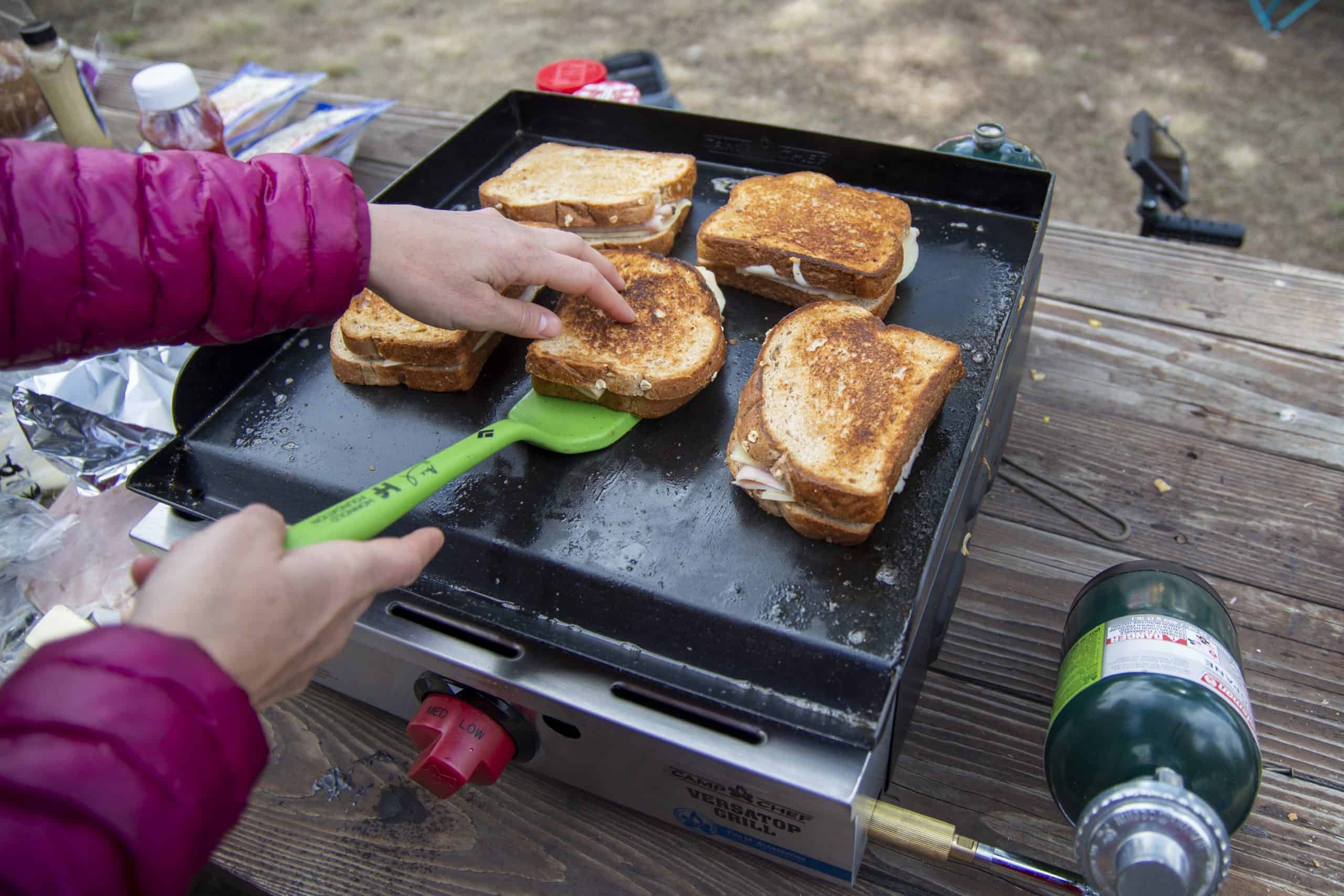
![6 Best Marshmallow Roasting Sticks in [year] 24 6 Best Marshmallow Roasting Sticks in 2024](https://www.gadgetreview.dev/wp-content/uploads/best-marshmallow-roasting-sticks.jpg)
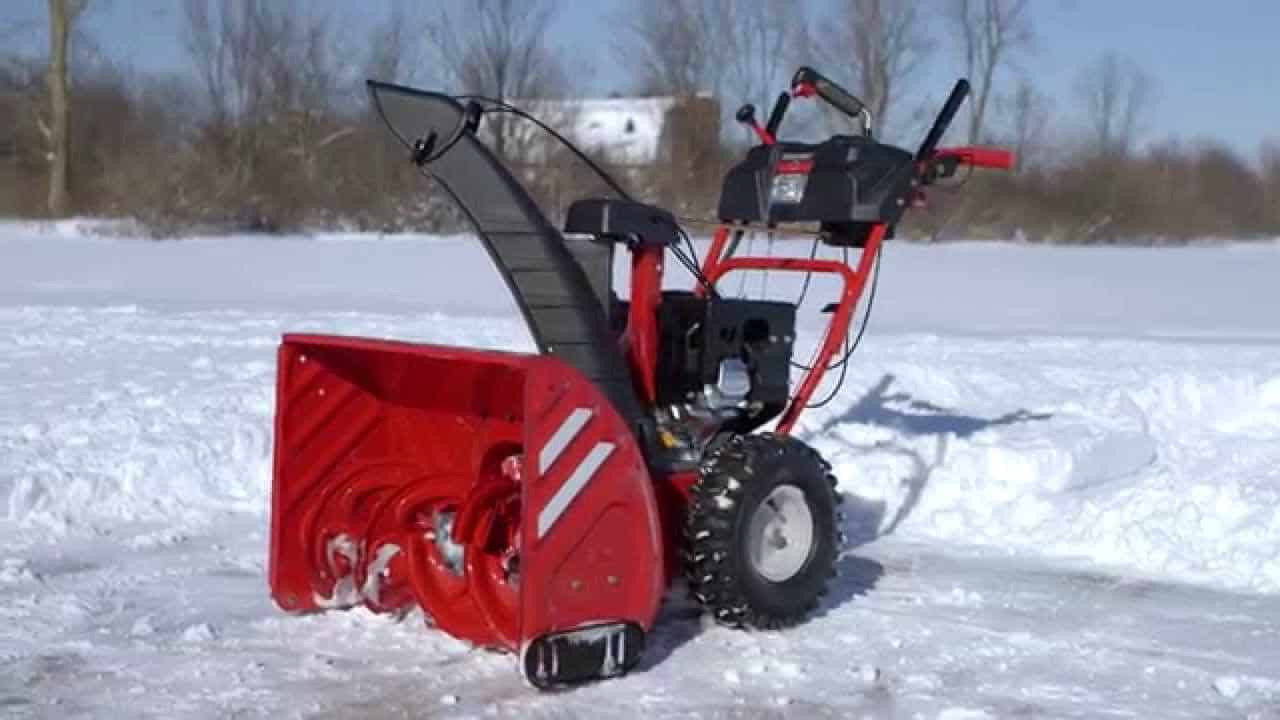
![7 Best Walkie Talkies to Stay in Contact in [year] 26 7 Best Walkie Talkies to Stay in Contact in 2024](https://www.gadgetreview.dev/wp-content/uploads/best-walkie-talkies-to-stay-in-contact.jpg)
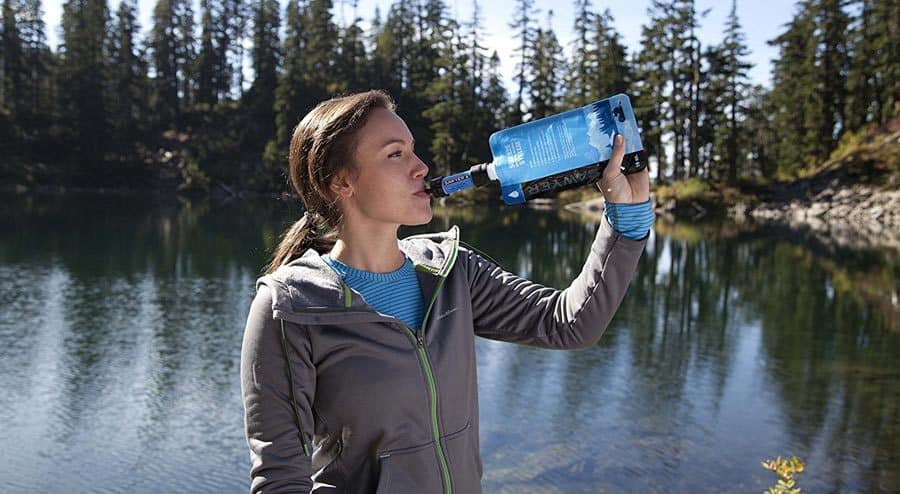
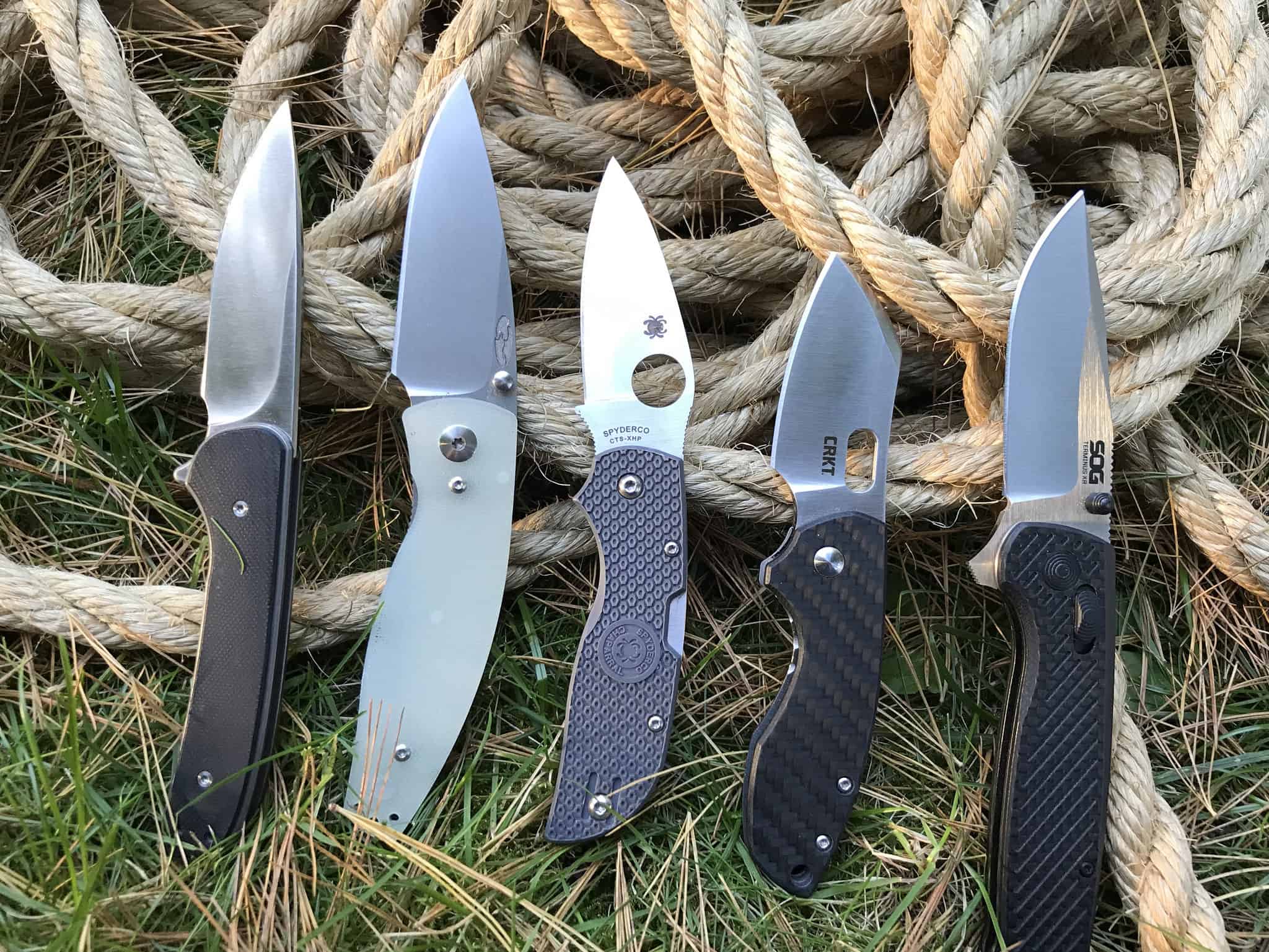
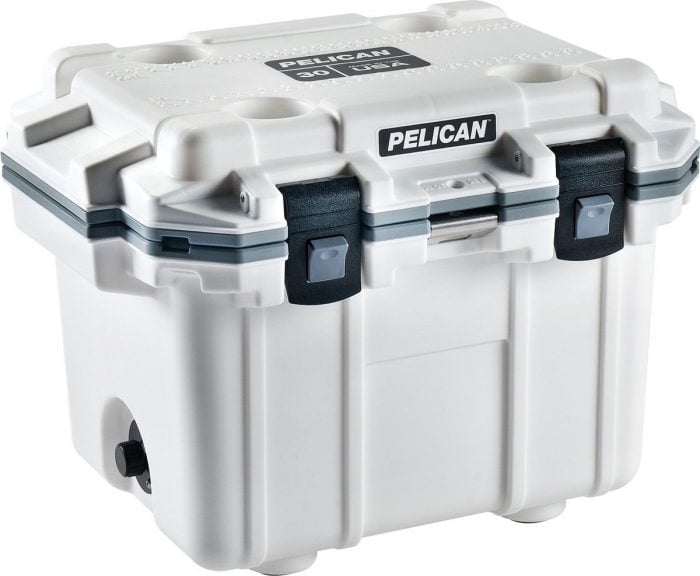
![6 Best Compasses for Hiking in [year] 30 6 Best Compasses for Hiking in 2024](https://www.gadgetreview.dev/wp-content/uploads/best-compasses-for-hiking.jpg)
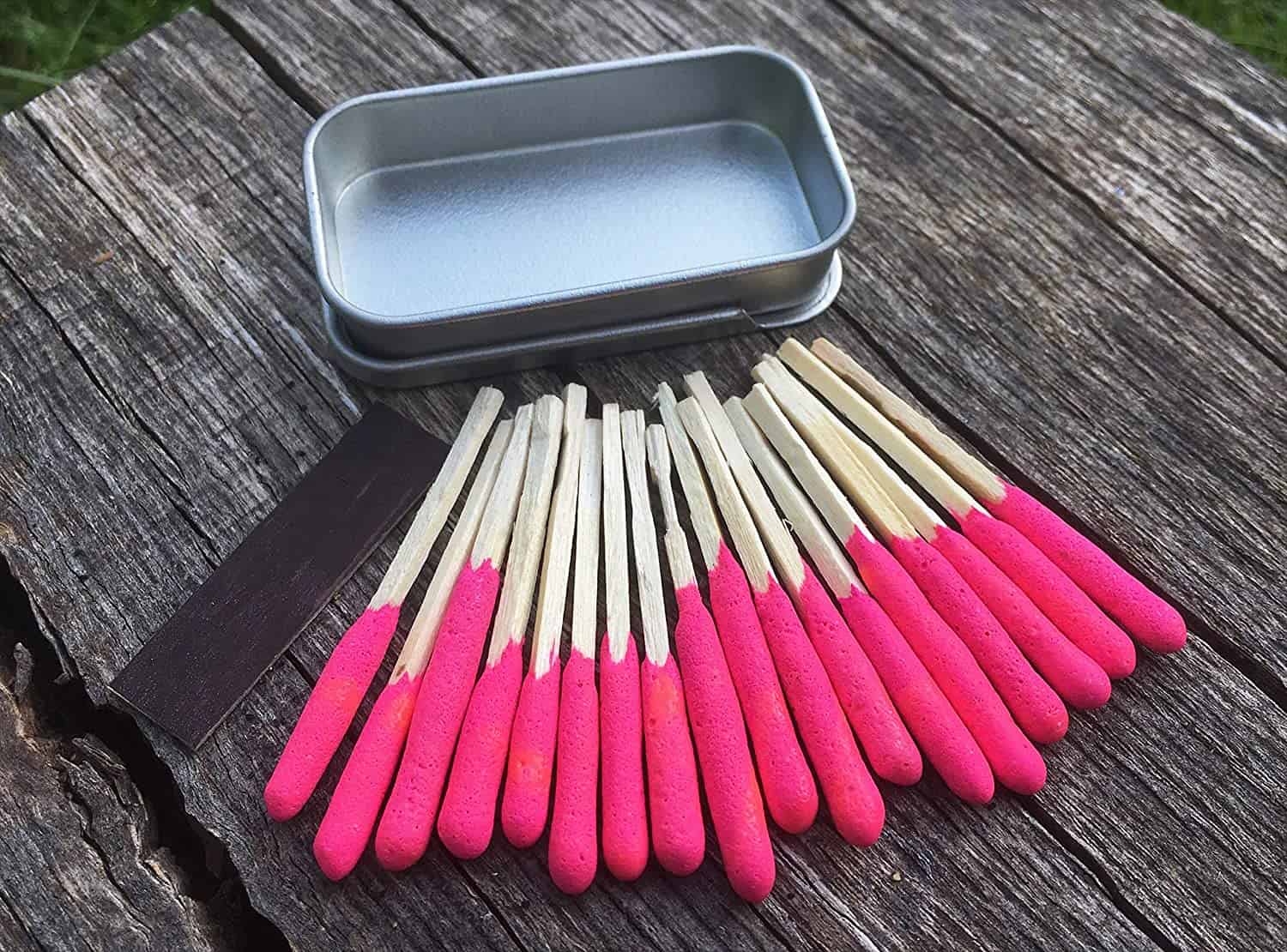
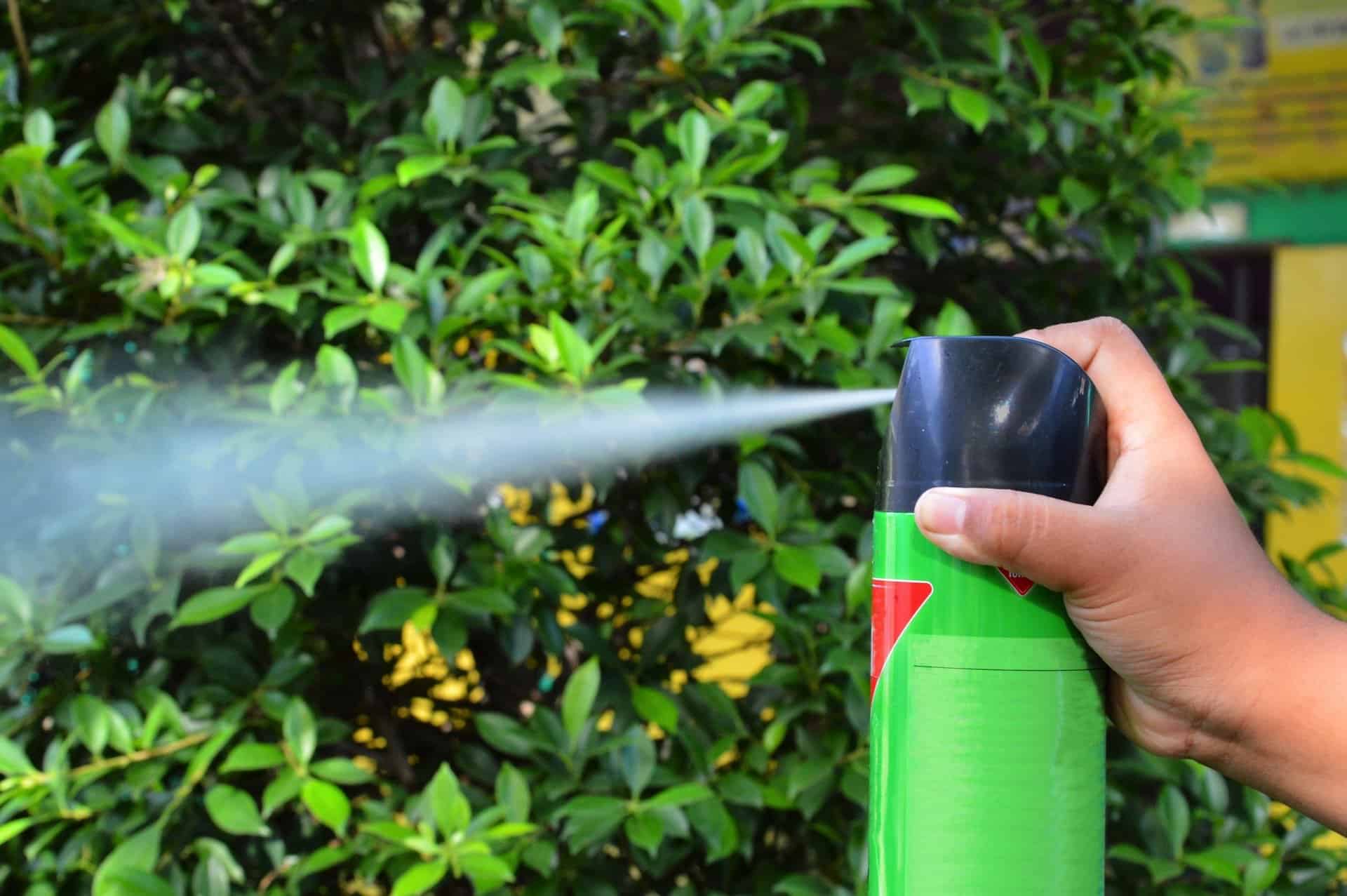
![Best Headlamps for [year] 33 Best Headlamps for 2024](https://www.gadgetreview.dev/wp-content/uploads/best-hiking-headlamp.jpg)
![Best Tactical Flashlight in [year] 34 Best Tactical Flashlight in 2024](https://www.gadgetreview.dev/wp-content/uploads/Lumify.jpg)
![7 Best Carabiner in [year] 35 7 Best Carabiner in 2024](https://www.gadgetreview.dev/wp-content/uploads/best-carabiners.jpg)
![7 Best Ropes in [year] 36 7 Best Ropes in 2024](https://www.gadgetreview.dev/wp-content/uploads/best-rope.jpg)
